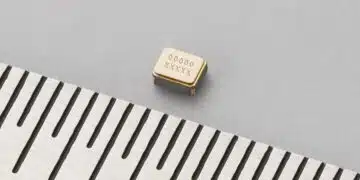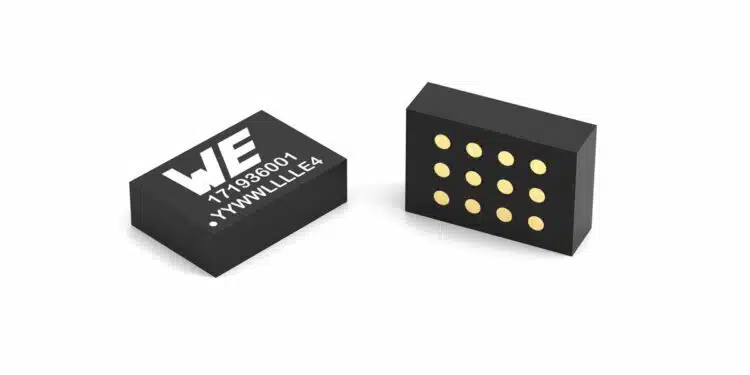Würth Elektronik releases a new generation of MagI³C-VDMM power MicroModules from Würth Elektronik.
The ultra-wide input voltage range gives the new MicroModule a robust resistance to voltage transients on the 48 V bus. Its compact LGA-12 package is also conducive to high integration density. The adjustable output voltage ranges from 0.85 to 6 V at a current up to 0.3 A.
The extended input voltage range of the Variable Step Down MicroModule from 3.5 to 60 V now covers bus voltages from 5 to 48 V, opening up applications from Point of Load (PoL) to direct 48 V bus voltage connection. So the MagI³C-VDMM series is ideally suited as a replacement for linear regulators, for example in the power supply of interfaces, sensors, microcontrollers, microprocessors, DSPs and FPGAs. Operational areas include industrial, testing and measurement technology, medical devices and point-of-load DC-DC applications.
Its small footprint and high efficiency (up to 86 percent) supports “cool design”, allowing its use in a temperature range from -40 to +105°C. To save energy, the power module can be set to sleep mode using an additional pin. The very low quiescent current of just 3 µA means the power module is particularly suitable for energy-sensitive applications. The integrated sync feature allows multiple Micromodules to synchronize to an external frequency.
The new MicroModule also meets the requirements of EMC standard EN55032/CISPR32 Class B for radiated and conducted interference with verified filter combinations. The selectively controllable “spread spectrum” feature optimizes EMC behavior.
The new member of the MagI³C-VDMM family is available from stock, even in larger quantities. Free samples can be requested at any time.





























